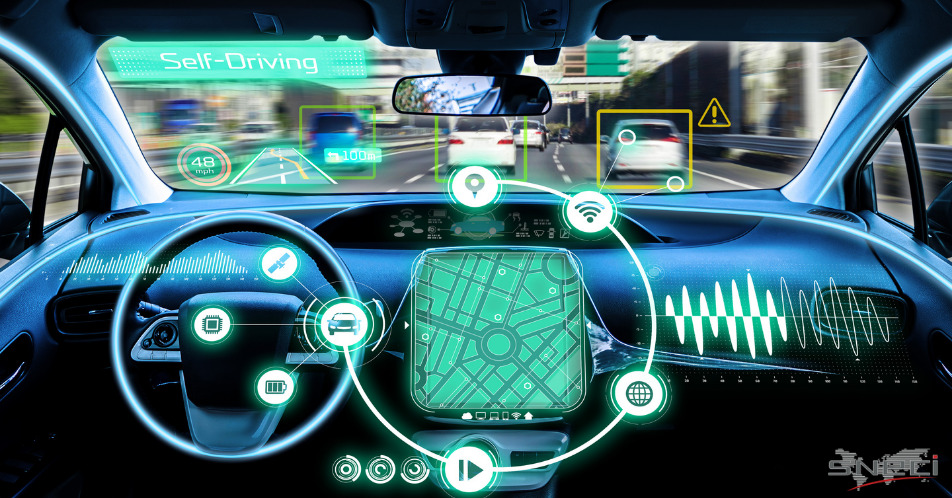
Advanced Driver-Assistance Systems (ADAS): Navigating the Future of Safe Driving
In the ever-evolving landscape of automotive technology, Advanced Driver-Assistance Systems (ADAS) have emerged as a transformative force, reshaping the way we drive and perceive road safety. This article will delve into the intricacies of ADAS, exploring its components, features, challenges, and future trends.
I. Introduction
A. Definition of Advanced Driver-Assistance Systems (ADAS)
Advanced Driver-Assistance Systems refer to a suite of technologies designed to enhance vehicle safety and assist the driver in various aspects of driving.
B. Evolution and significance of ADAS
The evolution of ADAS has been marked by breakthroughs in sensor technologies, machine learning algorithms, and communication systems. Its significance lies in its potential to reduce accidents and improve overall driving experience.
C. The impact on road safety and driving experience
ADAS aims to create a safer driving environment by providing real-time assistance and warnings, ultimately reducing the likelihood of collisions and enhancing the overall driving experience.
II. Components of ADAS
A. Sensor technologies
At the core of ADAS are advanced sensor technologies, including cameras, radar, lidar, and ultrasonic sensors. These sensors enable the system to perceive the vehicle’s surroundings with high precision.
B. Machine learning algorithms
The intelligence of ADAS lies in its machine learning algorithms, which analyze sensor data to make split-second decisions. These algorithms continuously learn and adapt to different driving scenarios.
C. Communication systems
ADAS relies on robust communication systems to exchange data between vehicle components and, in some cases, with other vehicles on the road. This real-time communication enhances the system’s ability to make informed decisions.
D. Control systems
The control systems of ADAS act upon the information gathered from sensors and algorithms, influencing various vehicle functions such as steering, acceleration, and braking.
III. Popular ADAS Features
A. Adaptive Cruise Control (ACC)
ACC adjusts the vehicle’s speed automatically to maintain a safe following distance from the vehicle ahead, providing a more relaxed and controlled driving experience.
B. Lane Departure Warning (LDW)
LDW alerts the driver if the vehicle unintentionally drifts out of its lane, mitigating the risk of lane departure-related accidents.
C. Automatic Emergency Braking (AEB)
AEB detects imminent collisions and automatically applies the brakes to prevent or reduce the severity of a collision.
D. Parking Assistance
Advanced parking assistance features use sensors and cameras to assist drivers in parking, making the process more convenient and reducing the likelihood of parking-related accidents.
IV. Challenges and Concerns
A. Technical limitations
Despite advancements, ADAS still faces technical limitations, such as challenges in adverse weather conditions and the need for continuous software updates to adapt to new scenarios.
B. Ethical considerations
The introduction of autonomous features raises ethical questions, such as decision-making in emergency situations and the balance between human intervention and machine control.
C. Cybersecurity risks
As vehicles become more connected, the risk of cyber threats increases. Ensuring the cybersecurity of ADAS systems is crucial to prevent unauthorized access and potential safety hazards.
V. Future Trends in ADAS
A. Integration with autonomous vehicles
The future of ADAS is intertwined with the development of autonomous vehicles. The integration of ADAS features into self-driving cars is expected to redefine the concept of driving altogether.
B. Advancements in sensor technology
Ongoing advancements in sensor technology, including the development of more reliable and cost-effective sensors, will contribute to the widespread adoption of ADAS.
C. Regulatory developments
As ADAS becomes more prevalent, regulatory bodies are expected to establish guidelines and standards to ensure the safety and uniformity of these systems across different manufacturers.
VI. ADAS in Different Vehicle Types
A. Passenger cars
ADAS features are increasingly becoming standard in new passenger cars, offering drivers enhanced safety and convenience.
B. Commercial vehicles
The implementation of ADAS in commercial vehicles has the potential to reduce accidents and improve the efficiency of freight transportation.
C. Two-wheelers
While ADAS is more commonly associated with four-wheelers, there is growing interest in adapting these systems for two-wheelers to enhance motorcycle safety.
VII. User Experience and Acceptance
A. Benefits for drivers
ADAS enhances the driving experience by providing assistance in various scenarios, reducing the cognitive load on the driver, and contributing to a safer road environment.
B. Challenges in user acceptance
Some drivers may face challenges adapting to the technology, leading to concerns about overreliance or a lack of understanding of ADAS features.
C. Education and awareness
Promoting education and awareness about ADAS functionalities is crucial to ensure users fully understand the benefits and limitations of the technology.
VIII. Industry Players and Innovations
A. Key companies in the ADAS market
Prominent companies such as Tesla, Waymo, and Bosch are at the forefront of developing innovative ADAS technologies and shaping the future of automotive safety.
B. Noteworthy innovations and collaborations
The industry continues to witness groundbreaking innovations and collaborations, driving the evolution of ADAS technologies and expanding their capabilities.
IX. Cost Considerations and Accessibility
A. Initial costs and long-term savings
While the initial costs of vehicles equipped with ADAS may be higher, the potential long-term savings from reduced accidents and insurance premiums make them a worthwhile investment.
B. Accessibility across different socioeconomic groups
Ensuring the accessibility of ADAS across different socioeconomic groups is essential to avoid creating a technological divide in road safety.
X. ADAS Maintenance and Upkeep
A. Importance of regular system updates
Regular software updates are vital to address emerging threats, enhance performance, and introduce new features, ensuring the continued reliability of ADAS systems.
B. Training and support for users
Providing comprehensive training and support for users is crucial to maximize the benefits of ADAS and address any concerns or challenges they may encounter.
C. Addressing common issues
Understanding and addressing common issues, such as false alarms or misinterpretations by the system, is essential to maintain user trust in ADAS technology.
XI. Case Studies
A. Success stories of ADAS implementation
Examining real-world success stories highlights the positive impact of ADAS on reducing accidents and improving overall road safety.
B. Lessons learned from challenges
Analyzing challenges and setbacks provides valuable insights for continuous improvement in ADAS technology and its integration into everyday driving.
XII. Integration with Smart Cities
A. ADAS role in smart city infrastructure
The integration of ADAS with smart city initiatives contributes to enhanced traffic management, reduced congestion, and improved overall urban mobility.
B. Collaboration with urban planning initiatives
Collaboration between ADAS developers and urban planners is crucial to align technology with city infrastructure, ensuring seamless integration and maximum effectiveness.
XIII. Environmental Impact
A. Fuel efficiency improvements
ADAS contributes to improved fuel efficiency by optimizing driving patterns and reducing unnecessary acceleration and deceleration.
B. Reduction in traffic congestion
Efficient traffic management facilitated by ADAS can contribute to a reduction in overall traffic congestion, leading to lower emissions and a smaller environmental footprint.
XIV. Global Adoption and Regional Variances
A. ADAS adoption across different countries
The adoption of ADAS varies across countries, influenced by factors such as regulatory frameworks, consumer preferences, and infrastructure development.
B. Variances in regulations and preferences
Differences in regulations and consumer preferences create variances in the implementation and acceptance of ADAS features globally.
XV. Conclusion
A. Recap of the impact and future potential of ADAS
In conclusion, Advanced Driver-Assistance Systems have already made significant strides in enhancing road safety and driving convenience. As technology continues to advance, the future promises even more exciting developments, with ADAS playing a crucial role in shaping the landscape of safe and efficient transportation.

